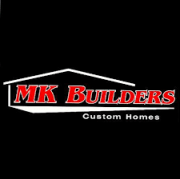While hiring a professional roofer is highly important for getting your roof correctly installed, many minor roof repairs are well within the realm of DIY homeownership. If your roof is older and outside of warranty, there’s really no reason you couldn’t repair a minor leak or roof issue to buy some more time—as long as you have the proper tools to get the job done.
Common Types of Roof Repairs
There are plenty of minor roof repairs that a savvy homeowner can remedy. Some common shingle repairs might include:
- Broken shingles from bad weather
- Lifted shingles from wind, which just need to be nailed back down
- Granule loss from hail or large debris
- Curling or missing shingles
Repairs to your shingles are easy enough if you just need to replace a shingle or two. Larger-scale projects should be referred to the pros. Other types of common DIY-friendly roofing repairs involved:
- Replacing flashing
- Replacing or fixing gutters and downspouts
- Filling a small leak in the roof with caulk or a roof patch
- Re-insulating the attic or improving ventilation
Today, we will help you manage your DIY roof repair with this essential list of tools, plus when to hire a pro if the job is too advanced. Take notes, homeowners, so you can feel the satisfaction of a successful roofing repair.
The 11 Best Tools for Roof Repair
Repair jobs are only as good as the people and the tools used to get it done. As professional roofers, we know what it takes to make even minor repairs run smoothly or not. Below is a list of the best roofing tools and materials you need for your DIY roof repair.
![[safety body construction] Working at height equipment. Fall arrestor device for worker with hooks for safety body harness on selective focus. Worker as in construction background.](https://appleroof.com/app/uploads/2022/07/roofingharnessfallpreventionkit-1024x683.jpeg)
1) Safety Gear & Fall Protection Kit
The first and most important thing you need for any roofing job is safety gear and a fall protection kit. We can’t stress enough how dangerous it is to work on a roof without taking proper safety precautions. At the very least, you should have a harness and some type of anchor system to keep you tethered to the roof if you lose your balance. The Guardian Fall Protection Kit is a great option.
You should also wear safety gloves, goggles, and proper footwear. Some non-slip ankle work boots are your best bet to easily navigate up on your roof securely. And gloves and goggles will protect you from nails, staples, or other sharp objects used during roof repair.
2) Something to Carry Your Tools
A good tool belt will be a lifesaver when working on any DIY project— particularly on the roof. A tool belt can also be a safety measure as you limit your movement up on the roof and getting up and down on the ladder. Keeping the necessary tools on your person makes the job safer and faster. Boulder Tool Belts are what the pros use and are some of the best, most comfortable tool belts for contractors.
3) Shingle Remover Tool
A shingle remover or roof rake will help quickly remove large amounts of shingles. While minor roof repairs may require just removing one shingle or one strip of shingles, having a shingle remover tool on hand can be helpful for bigger jobs. Bully Tools is a household name and has a great, 10-gauge steel roof remover tool that the pros recommend.

4) Utility Knife
A basic retractable utility knife comes in handy with just about any DIY project around the house, particularly with roof repairs. The utility knife will allow you to quickly remove caulk, cut openings, or even reshape or resize a shingle to fit without getting down off the ladder.
5) Tape Measure or Laser Tool
A tape measure or laser measuring tool will be an essential tool for measuring any roof repair job before you start. You’ll want to know exactly how big of an area you’re working with and the size of individual shingles, nails, and more. A digital tape measure like the one from eTape16 is a favorite of contractors for its precision and convenience.
6) Hammer Tacker
If you’re going to be doing any roofing repairs that involve installing new shingles, you will need a hammer tacker. The hammer tacker will help secure the shingle in place while you work and give you more power than just using a regular hammer. This one from Dewalt works excellent for manual tacking if you need a quick staple to hold something in place.
7) Chalk Line Kit
The last thing you want to do is install your new shingles crooked. That’s where a chalk line kit can come in handy. Instead of eyeballing your measurements, a chalk line is an easy way to lay a straight angle to install against. Then the chalk lines simply wash away when it rains. Check out this easy-to-use chalk line bestseller on Amazon.
8) Hammer or Pry Bar
Both the backside of a hammer and pry bar can work great to peel up a shingle you need to replace. While the roofing shovel or shingle remover tools are ideal, a pry bar can be perfect for a small job like one shingle that needs to be lifted. Plus, you can keep it in your handy tool belt!

9) Ladder
And, of course, you’re going to need a ladder. Be sure to read the instructions on properly setting up your ladder before getting started on any roof repairs. You want to be sure your ladder is placed on firm, level ground and at the correct angle before climbing. Note: your extension ladder should always extend at least 3 feet past the roof’s edge.
This will ensure you can mount and dismount safely, and the ladder won’t fall because it’s too short. The Xtend and Climb telescoping ladder is a fantastic option for homeowners and contractors alike.
10) Roof Assistance Tool
A roof assistance tool is beneficial for contractors doing a large-scale roofing project who are up on the roof all day—but also the inexperienced DIY homeowner who needs a secure place to rest when repairing their roof. A roof assistance tool is basically a step ladder that aligns with the angle of the roof and provides a place to step, kneel, or set tools while working on the roof. We love the Pitch Hopper or the PiViT Ladder Tool.
11) Roofing Nailer With Air Compressor
You can get two main types of roofing nailers: a pneumatic (used with an air compressor) or a rechargeable cordless nailer. A pneumatic nailer, without a doubt, can provide more power for extended periods of time. It connects to your air compressor and quickly drives nails into your new shingles.
However, a cordless nailer can still work efficiently and can help prevent any cords from getting tangled or tripped up. Below are some of the best to choose from:
Now that you have all your tools and materials ready to do that job, here are a few critical tips for when you need to do your roof repair.
Before Your Start: 6 DIY Roofing Repair Tips
There are some critical tips that homeowners should be mindful of when getting up on the roof to do any repair, big or small. These tips could save your life.
Be Careful of Wires
Be sure to take extra care when doing any repair near electrical wires. If you’re unsure, always err on the side of caution and call an electrician before proceeding with your repairs.
Apply Roofing Felt
Adding roofing felt is a great way to help protect your roof from water damage, and it’s a critical step in any roofing project. Be sure to add roofing felt before installing your shingles to help ensure a longer lifespan for your roof.
Remove Snow and Ice First
If you live in an area that gets a lot of snowfall, remove any excess snow or ice before beginning your roofing repairs. This will help you avoid any accidents, making your repair job much more manageable.
Wear the Right Gear
It’s essential to wear the proper clothing and gear when doing any roof repair. Wear gloves, long pants, and a long-sleeved shirt to protect your skin from the sun and any sharp edges.
Check the Weather
Be sure to check the weather forecast before beginning any roof repair. You don’t want to get caught in a storm while you’re up on the roof!
Don’t Work Alone
It’s never a good idea to work on your roof alone. Be sure to have at least one other person with you in case of an emergency. Plus, they can be your ladder-holder and tool-passer—a win-win!
When DIY Roof Repair Doesn’t Cut It
Sometimes, no matter how hard you try, the roof repair is just too big or complex for a DIY project. In cases like these, it’s always best to call in a professional roofing contractor. A good contractor will be able to assess the damage and make any necessary repairs quickly and efficiently.
That’s where Apple Roofing comes in. Our roofing experts can fix or replace your roof and offer homeowners education to help maintain and prevent issues in the future. If you find roof damage that needs a quick repair, contact Apple Roofing right away!
























